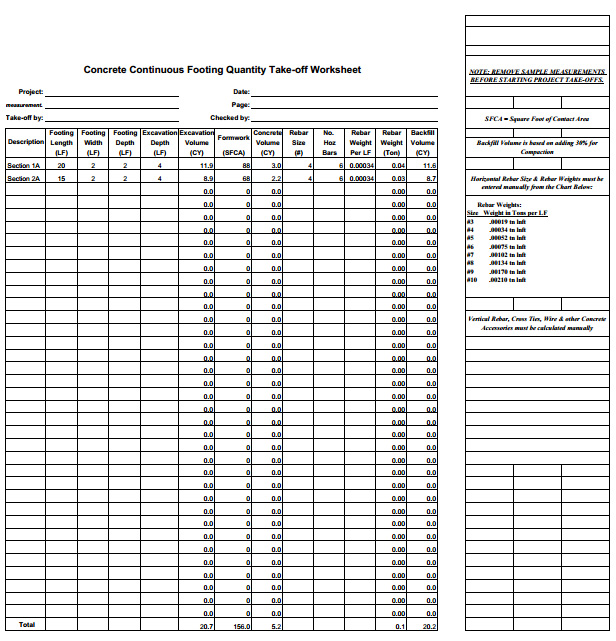


For example, “100 cubic yards of 3000 psi concrete” may be adequate for a materials takeoff, but information about what the concrete is to be used for is required in a cost estimate takeoff. A materials takeoff also rarely includes sufficient information for actual pricing.In cost estimate quantity takeoffs, measurements are made “ net in place” whereas materials takeoffs measure gross quantities.3 Differences between Materials Takeoff and Quantity TakeoffĪ materials takeoff, used to calculate the quantity of materials that needs to be purchased in order to construct a particular item of a project, differs from a quantity takeoff for a cost estimate in three substantive ways: The confusion regarding quantity takeoff stems from the fact that takeoffs are often referred to in the industry by many names, and these names are used interchangeably even though they can refer to different things:įor example, although materials takeoff and quantity takeoff are most often treated in the industry as identical processes, they’re actually two different processes that should be distinguished from each other.
#EARTHWORK QUANTITY TAKEOFF EXAMPLE SERIES#
In fact, according to expert David Pratt, in his detailed analysis of the term in the Fundamentals of Construction Estimating, a quantity takeoff is actually the process of measuring the work of a project in the form of a series of quantified work items, which includes both labor and materials.


But a quantity takeoff is actually not the process of estimating materials directly. For example, many assume a quantity takeoff refers only to estimating materials or that the process simply consists of reviewing a set of project plans and then quantifying information about the physical materials the architect, engineer, or draftsperson specifies to build the project. While performing a quantity takeoff, estimators “take off” information from common contract documents: including architectural drawings, structural engineering drawings, plumbing drawings, site water reticulation and drainage drawings, electrical drawings, and HVAC drawings.ĭespite the fact quantity takeoffs are so common in the industry there is still some confusion over what the process entails. The term takeoff actually evolved from the phrase “taken off,” which loosely translates to “measured.” Only by taking the information “off” documents can estimators convert information from drawings into a list of items with quantities that can be measured. In practice, however, a construction quantity takeoff is a term commonly used in the industry to describe one of its most essential functions: the process by which a cost estimator reviews a set of plans during preconstruction in order to “take off” measurements from these plans to forecast construction costs. Learn the Best Method to Produce an Accurate Quantity Takeoff What Is a Construction Quantity Takeoff?Īccording to the Dictionary of Construction Terms, a construction quantity takeoff, in theory, is “the estimation of quantities for a contract from plans and drawings which are then recorded in the bill of quantities” (305). 3 Primary Takeoff Methods: Manual, Digital, and Estimating Service.What Is Measured in a Quantity Takeoff and How Is it Measured?.What Is a Construction Quantity Takeoff?.Learn the Best Method to Produce an Accurate Quantity Takeoff.


 0 kommentar(er)
0 kommentar(er)
